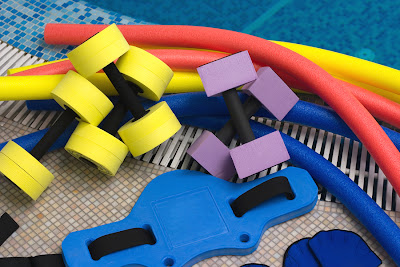Taper is the period of training prior a major swim meeting during the
season. Taper starts immediately after the most intense training has ended, and
the swimmers continue with reduced training that will supposedly allow them to
recover and superadapt. Up to this day there are three categories of tapers
that competitive swimmers use.
Tuesday, May 7, 2013
Four easy steps to freestyle [video]
Today's post is about freestyle and how to learn it for the beginners or
improve it for intermediate swimmers. It’s something I wanted to post for a
long time now but since the swimming facility in my home town was closed for
eight months it was impossible. In the following video I present 3 freestyle
drills that will help you learn how to breathe properly and how to move your
body during this stroke. Before you start practicing these drills you should be
able to balance in the water and can put your face in the water.
Monday, May 6, 2013
Neck pain in swimming
One of the most common injuries in swimming is neck injury. Although swimming
is a low impact exercise, it depends heavily on technique. That means that
swimming badly will affect not only your speed and efficiency but will also
lead to pain and stiffness. Neck pain and headache can be the result of several
factors associated to your technique. Swimmers who suffer from neck injuries
feel a constant, dull ache that may be present in the back of the head, top of
forehead, behind the eye, in the temple region or less commonly, around the jaw
or ear. Usually associated with neck pain, stiffness and difficulty turning the
neck. Other symptoms may be present such as numbness, dizziness, nausea or
light headedness.
Aqua fitness equipment
According to the Aquatic Exercise Association there are five types of
equipment that professionals can incorporate into their aquatic programmes. All
professionals should know the proper use of equipment, which means
understanding the function, purpose, limitations, properties, safety factors,
and biomechanics of the equipment.
Lyles takes charge as New Zealand national high performance coach
Swimming New Zealand has hired David Lyles, the head coach of the
Shanghai Swimming Team, to be their new National High Performance coach. Lyles was
the head coach of the University of Bath swim team from 1997-2005. After that
role, China brought him in to lead the Shanghai Swimming Team, which also
included duties with the Chinese National Team. Lyles swimmers had been
selected for 5 of the 6 last Olympics Games and he has also put swimmers on the
Chinese National Team for the 2010 and 2011 World Championships. He also
trained two out of the four members of the bronze winning relay team (4x200 m
free) at the 2012 Olympics Games.
Sunday, May 5, 2013
Friday, May 3, 2013
EnergyAustralia announces FINA and IPC teams
With the EnergyAustralia Swimming Championships just over, the
Australian Swimming Federation announced the teams that will represent Australia
at the 2013 FINA and IPC World Championships in Barcelona and Montreal
respectively. Michael Scott, Swimming Australia Director of High Performance,
said: “We’ve seen more than 20 athletes produce personal best times to gain
selection for this year’s FINA and IPC world championships and that’s a really
promising sign. We’ve got 86 days until we compete for Australia in Barcelona
and the challenge now is to improve further on the standards that athletes and
coaches have set themselves this week.
The next stage is about being professional in everything we do including
enhancing the performance culture of the team.”
Thursday, May 2, 2013
Mental preparation for swimmers
According to Mike Edger mental training is the segment of sports
psychology that concentrates specifically on helping athletes break through the
mental barriers that are keeping them from performing up to their peak
potential. A lot of coaches and swimmers avoid to use mental training as they
feel that it has nothing beneficial to their performance to offer them. As we
all know great performances is a combination of technique, training, nutrition,
and psychology. So I say that developing a mental preparation routine will only
help swimmers improve their performance.
Wednesday, May 1, 2013
Two techniques for cold water acclimatization
Acclimating to cold water during an open water race is a crucial
component for all open water swimmers and triathletes. That’s because the body
heat loss in cold water, for a non-exercising body, can be up to two to four
times greater than the heat loss in cold air at the same temperature. When you
exercise in cold water, swimming for example, the heat loss from your skin can
be 70 times greater than air of equal temperature.
There are two ways to lose heat during cold-water exercise, and these
are due to both conduction and convection. Conductive losses are direct losses
from one molecule to another through a liquid, solid or gas. Convective losses
depend on how fast water (or air) moves past the body.
Race tactics tips for young swimmers
Do you coach development and age group swimmers and they don’t know how
what to do during a race? This post is about general guidelines for
constructing tactics for the 50 m, 100 m, and 200 m events. Of course there
will be adjustments from one coach to another, one swimmer to another, and one
stroke to another, but these guidelines are the general rule of thumb that
coaches and their young swimmers should follow. These tactics should be
practiced in daily training so that swimmers arrive at a meet knowing their
race plans and feeling comfortable about what they want to do.
Subscribe to:
Posts (Atom)














